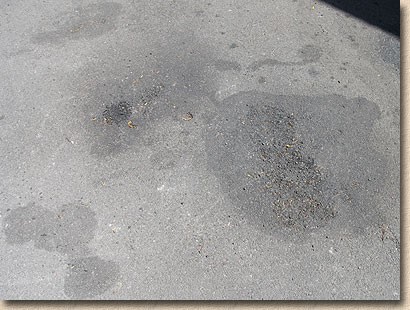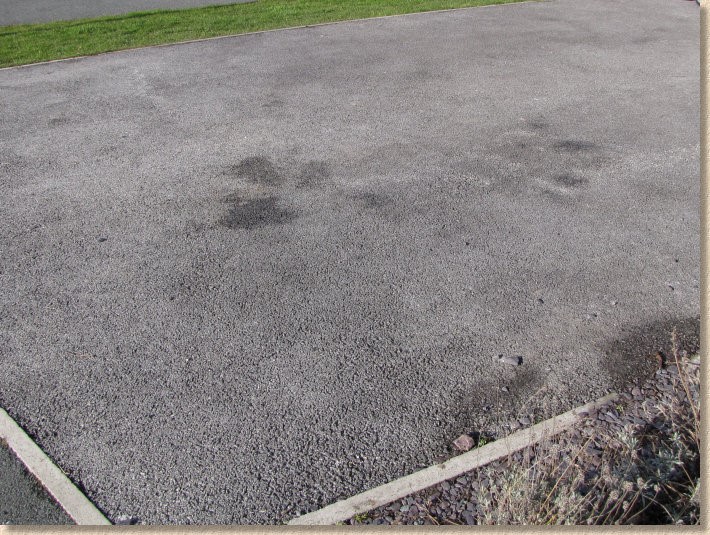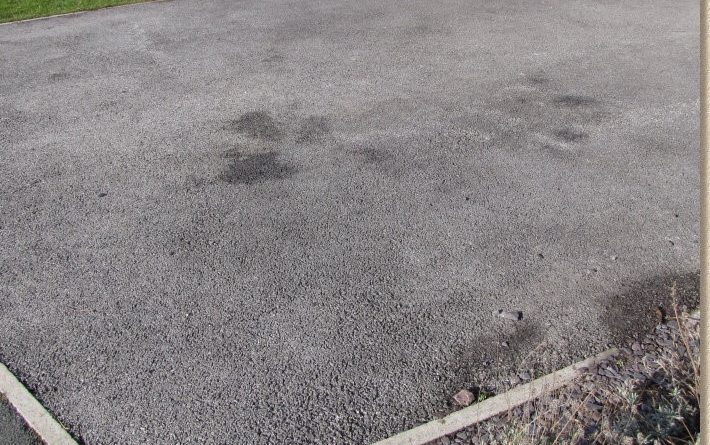Petrol Problems on Tarmac
Do you have unsightly oil patches on your drive? Those who have a passion for tinkering with cars, motorbikes or other machines will understand how annoying it can be to deal with petrol spills. With concrete, you can mop it up, which is why petrol stations have concrete and not tarmac surfaces. So, how to deal with a petrol-stained driveway?
The reason why petrol causes a problem on tarmac is that the sticky part of tarmac that glues it together is bitumen which is an oil by-product. Petrol can dissolve the bitumen and break down the surface of your driveway. This is the same for other oil by-product too, such as paraffin, light oil and diesel.

If you are present when the spill occurs, it’s best to mop it up as soon as it happens with an absorbent cloth. Warm water mixed with detergent and a brush is the next thing to try but don’t put too much pressure on the tarmac or it could loosen. The detergent and water should help to break down the petrol, so you can then rinse with plenty of water.
If you are not aware of the leak or spill, the only real solution to getting rid of the stain and possible damage is to remove the top surface where the patch is and re-patch it with fresh tarmac. This won’t be seamless however, so any fresh patch will always be visible.
If you leave the petrol, it will continue to break down the tarmac, loosening the aggregate layer. Whenever the pressure of a vehicle passes over it, it will push more aggregate out, leaving an ugly hole. Better to get it fixed sooner rather than later. For Tarmac contractors Yorkshire, visit https://www.wrsroadsurfacing.co.uk/
A good patching method is to cut down into the surface with a power saw to around 5cm deep. Mark around the stain leaving a 10cm gap on each side. This is to ensure all the petrol from under the surface is included as well as that which is visible on top.
When the area has been cleared of loose aggregate, the edges of the hole should be covered with tarmac jointing compound. This prevents water entering the edges of the hole while the patch is setting. It’s always best to have a professional deal with any tarmac repairs that you need.

The hole is then filled with a tarmac repair product, which consists of tarmac mixed with retardants. This will be applied in two to three layers, compacted down by a lump hammer and metal plate.
Once the patch reaches the same level as the rest of the drive, more tarmac jointing compound is needed around the join. This is what makes the patch visible but is a necessary part of the job to prevent water from getting in and breaking the seal between the patch and the rest of the drive.


